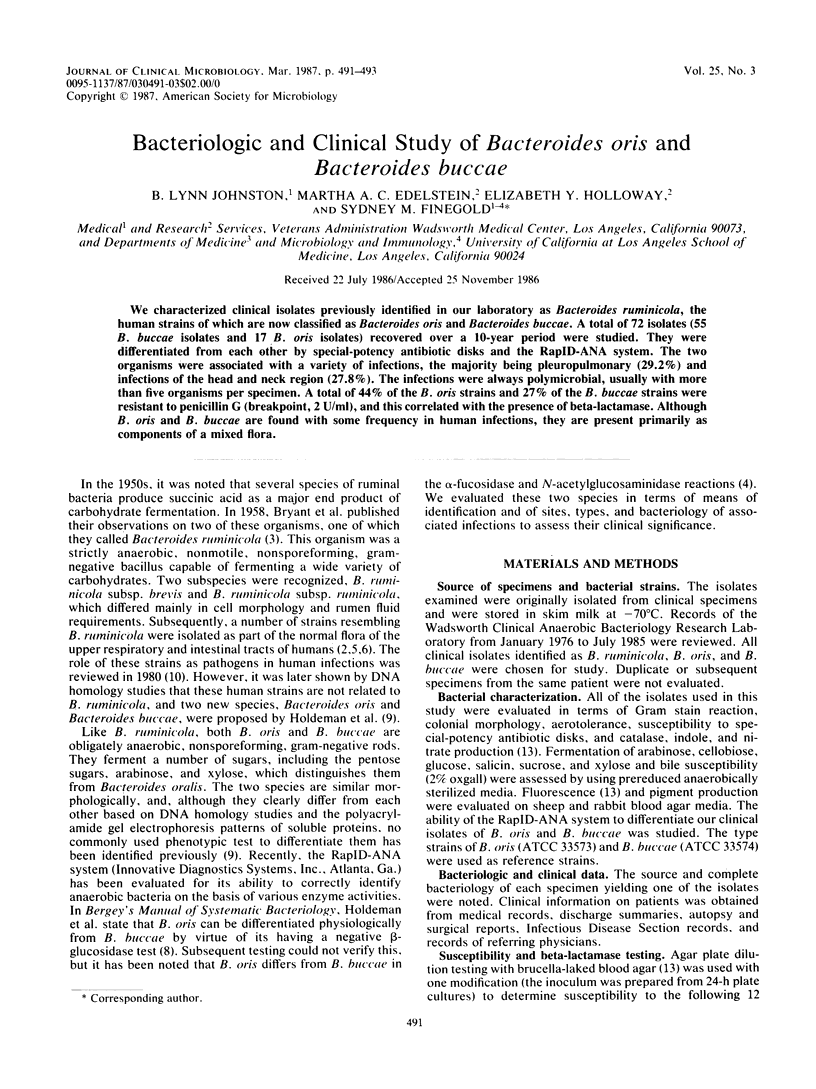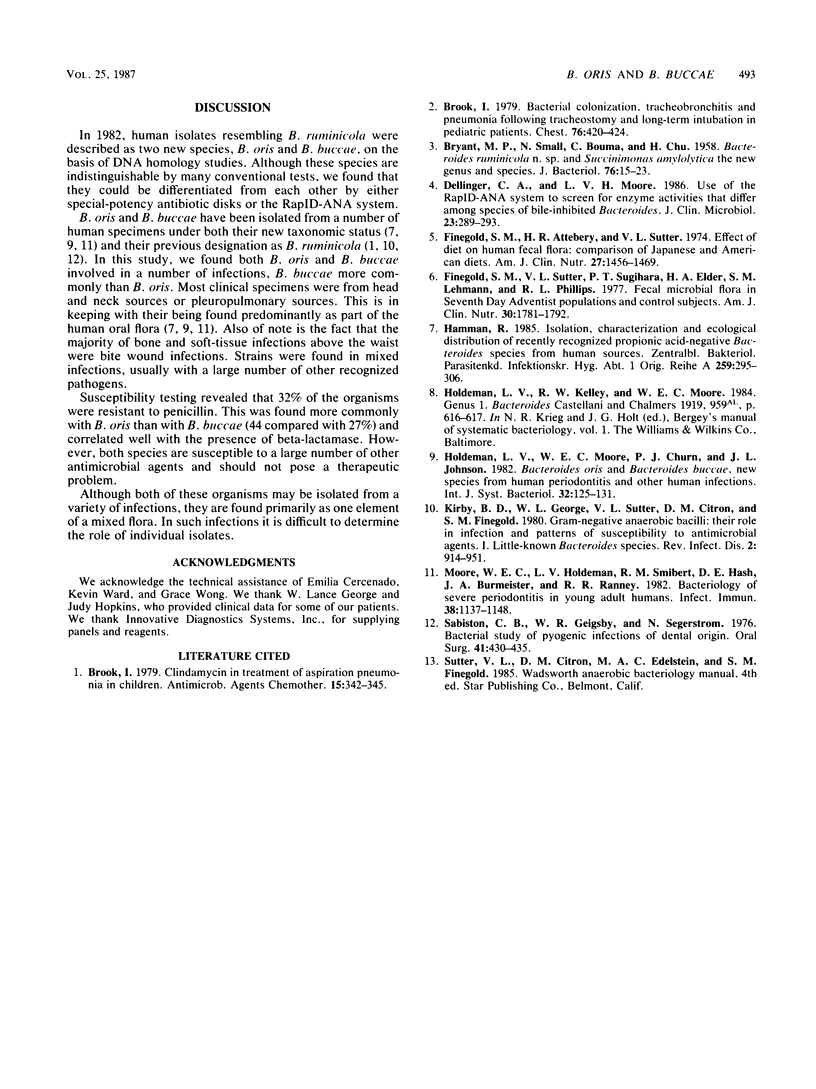Abstract
We characterized clinical isolates previously identified in our laboratory as Bacteroides ruminicola, the human strains of which are now classified as Bacteroides oris and Bacteroides buccae. A total of 72 isolates (55 B. buccae isolates and 17 B. oris isolates) recovered over a 10-year period were studied. They were differentiated from each other by special-potency antibiotic disks and the RapID-ANA system. The two organisms were associated with a variety of infections, the majority being pleuropulmonary (29.2%) and infections of the head and neck region (27.8%). The infections were always polymicrobial, usually with more than five organisms per specimen. A total of 44% of the B. oris strains and 27% of the B. buccae strains were resistant to penicillin G (breakpoint, 2 U/ml), and this correlated with the presence of beta-lactamase. Although B. oris and B. buccae are found with some frequency in human infections, they are present primarily as components of a mixed flora.
Full text
PDF


Selected References
These references are in PubMed. This may not be the complete list of references from this article.
- BRYANT M. P., SMALL N., BOUMA C., CHU H. Bacteroides ruminicola n. sp. and Succinimonas amylolytica; the new genus and species; species of succinic acid-producing anaerobic bacteria of the bovine rumen. J Bacteriol. 1958 Jul;76(1):15–23. doi: 10.1128/jb.76.1.15-23.1958. [DOI] [PMC free article] [PubMed] [Google Scholar]
- Brook I. Bacterial colonization, tracheobronchitis, and pneumonia following tracheostomy and long-term intubation in pediatric patients. Chest. 1979 Oct;76(4):420–424. doi: 10.1378/chest.76.4.420. [DOI] [PubMed] [Google Scholar]
- Brook I. Clindamycin in treatment of aspiration pneumonia in children. Antimicrob Agents Chemother. 1979 Mar;15(3):342–345. doi: 10.1128/aac.15.3.342. [DOI] [PMC free article] [PubMed] [Google Scholar]
- Dellinger C. A., Moore L. V. Use of the RapID-ANA System to screen for enzyme activities that differ among species of bile-inhibited Bacteroides. J Clin Microbiol. 1986 Feb;23(2):289–293. doi: 10.1128/jcm.23.2.289-293.1986. [DOI] [PMC free article] [PubMed] [Google Scholar]
- Finegold S. M., Attebery H. R., Sutter V. L. Effect of diet on human fecal flora: comparison of Japanese and American diets. Am J Clin Nutr. 1974 Dec;27(12):1456–1469. doi: 10.1093/ajcn/27.12.1456. [DOI] [PubMed] [Google Scholar]
- Finegold S. M., Sutter V. L., Sugihara P. T., Elder H. A., Lehmann S. M., Phillips R. L. Fecal microbial flora in Seventh Day Adventist populations and control subjects. Am J Clin Nutr. 1977 Nov;30(11):1781–1792. doi: 10.1093/ajcn/30.11.1781. [DOI] [PubMed] [Google Scholar]
- Kirby B. D., George W. L., Sutter V. L., Citron D. M., Finegold S. M. Gram-negative anaerobic bacilli: their role in infection and patterns of susceptibility to antimicrobial agents. I. Little-known Bacteroides species. Rev Infect Dis. 1980 Nov-Dec;2(6):914–951. doi: 10.1093/clinids/2.6.914. [DOI] [PubMed] [Google Scholar]
- Moore W. E., Holdeman L. V., Smibert R. M., Hash D. E., Burmeister J. A., Ranney R. R. Bacteriology of severe periodontitis in young adult humans. Infect Immun. 1982 Dec;38(3):1137–1148. doi: 10.1128/iai.38.3.1137-1148.1982. [DOI] [PMC free article] [PubMed] [Google Scholar]
- Sabiston C. B., Jr, Grigsby W. R., Segerstrom N. Bacterial study of pyogenic infections of dental origin. Oral Surg Oral Med Oral Pathol. 1976 Apr;41(4):430–435. doi: 10.1016/0030-4220(76)90269-3. [DOI] [PubMed] [Google Scholar]


